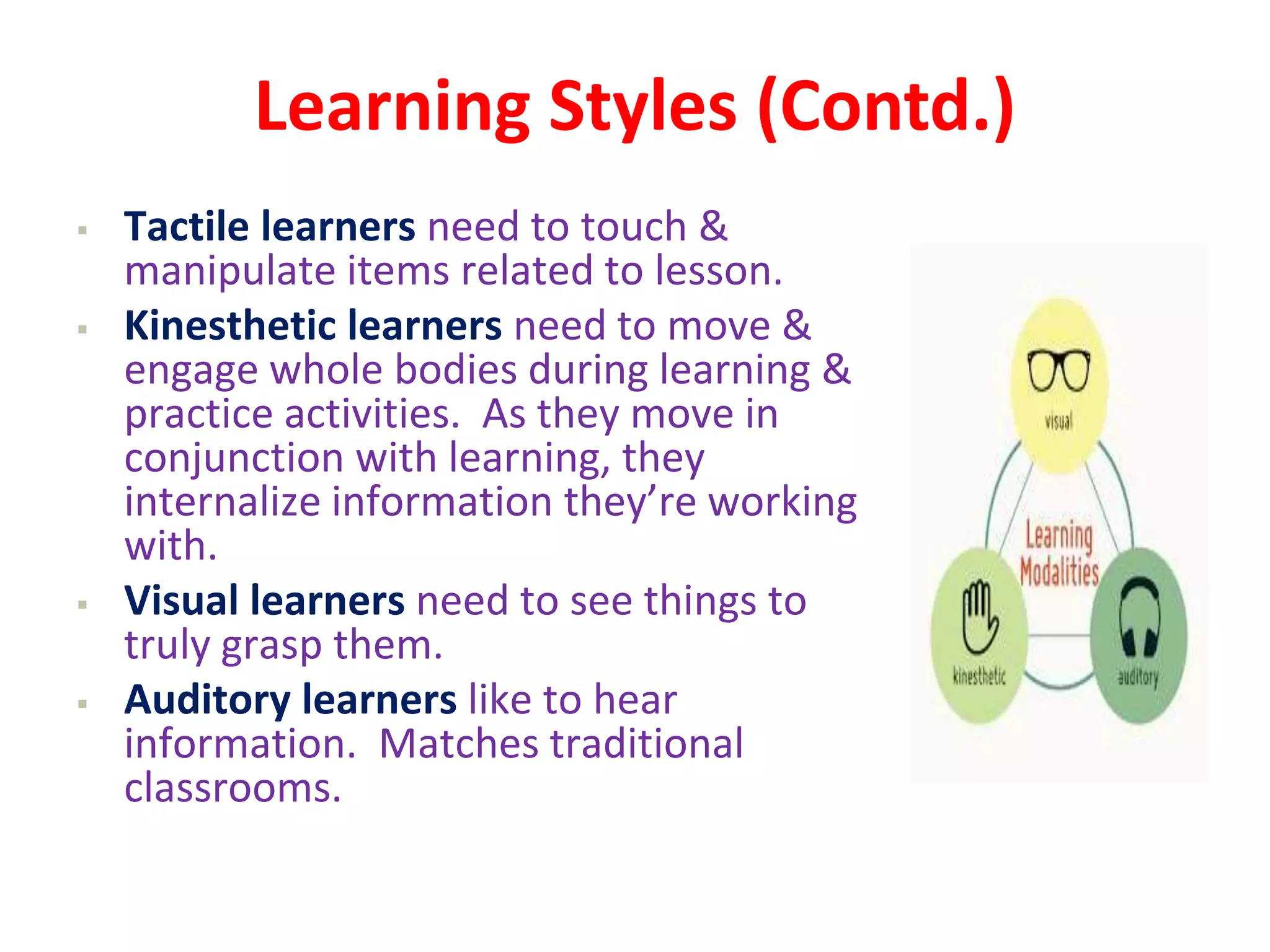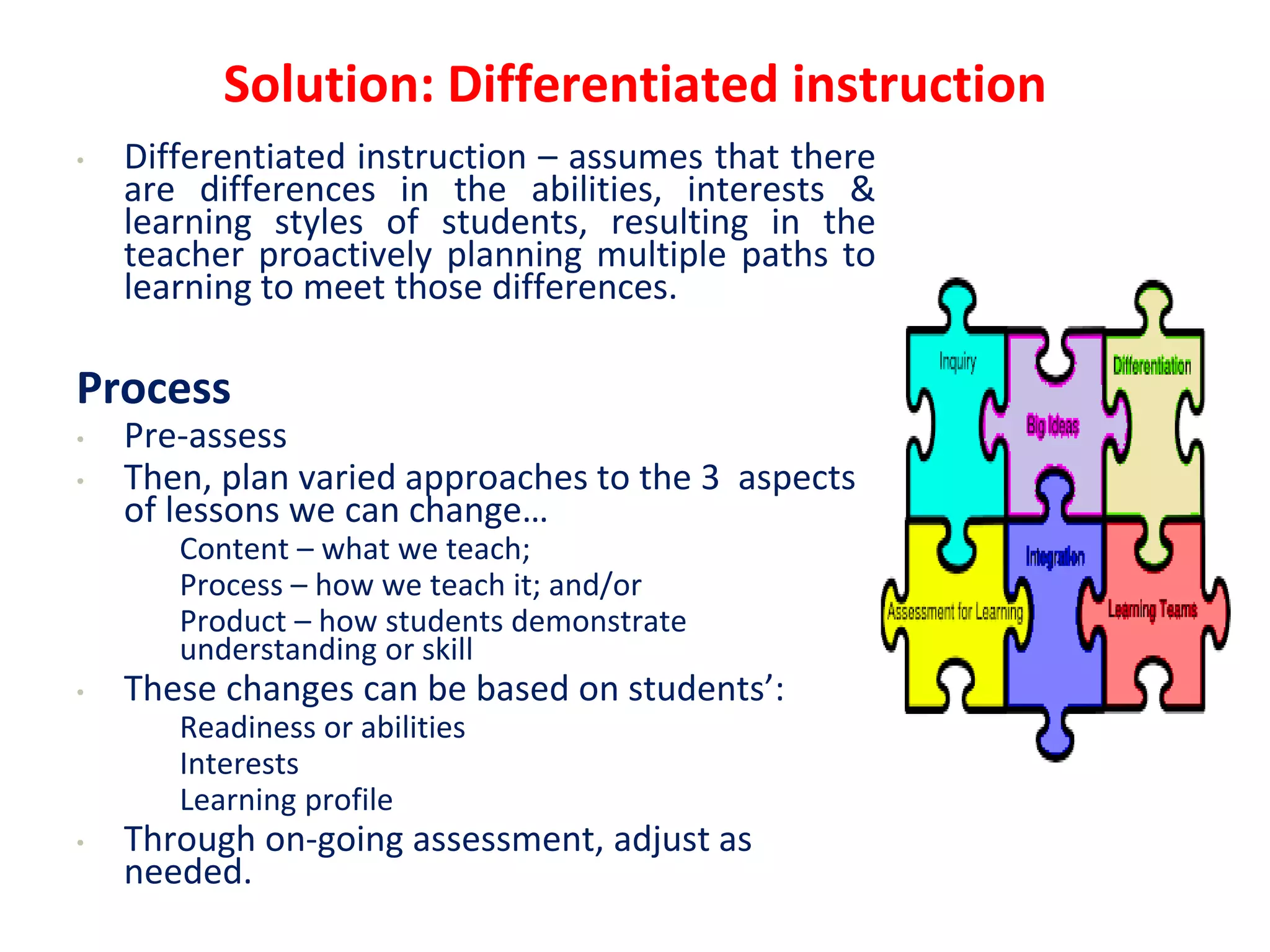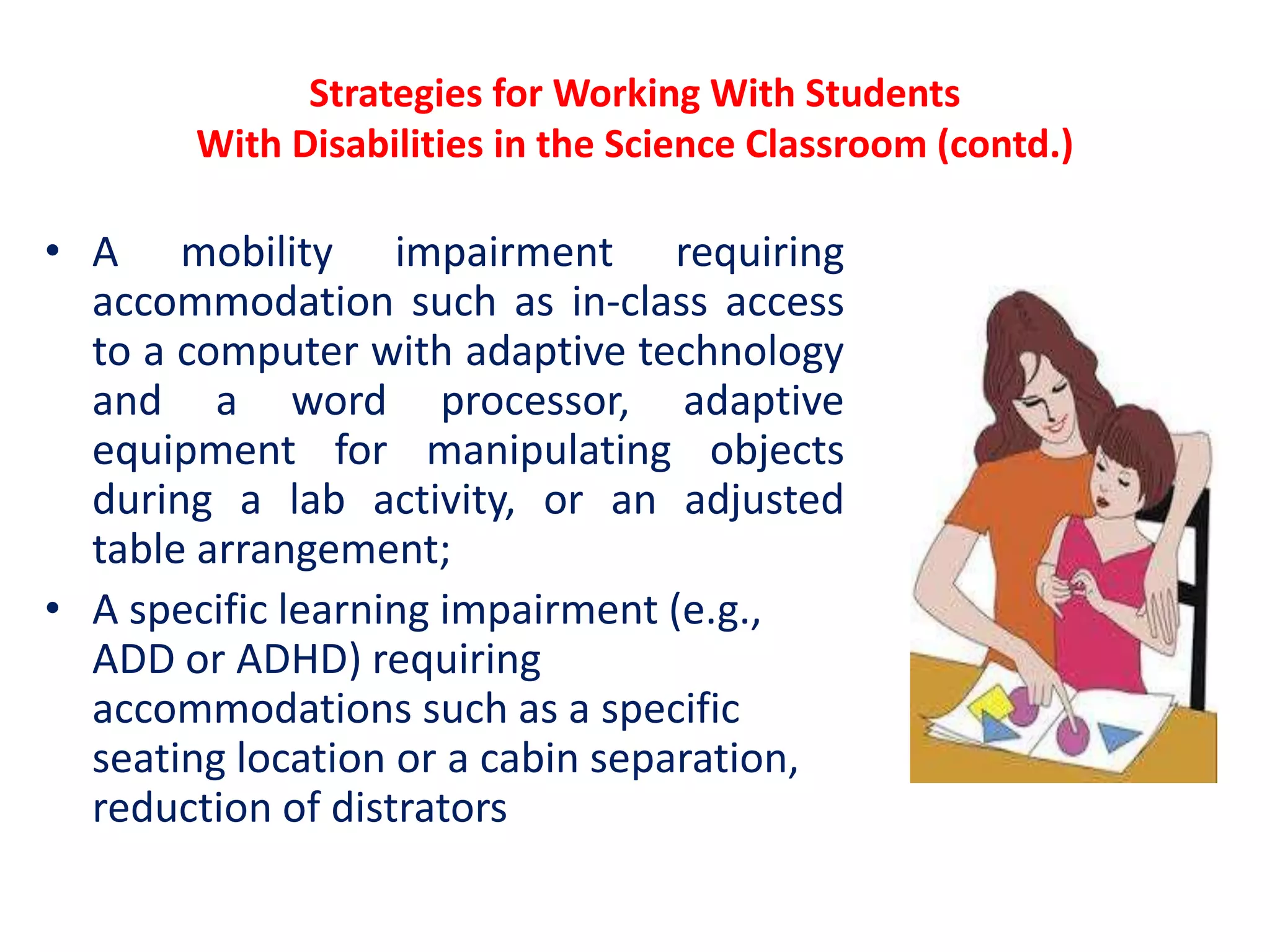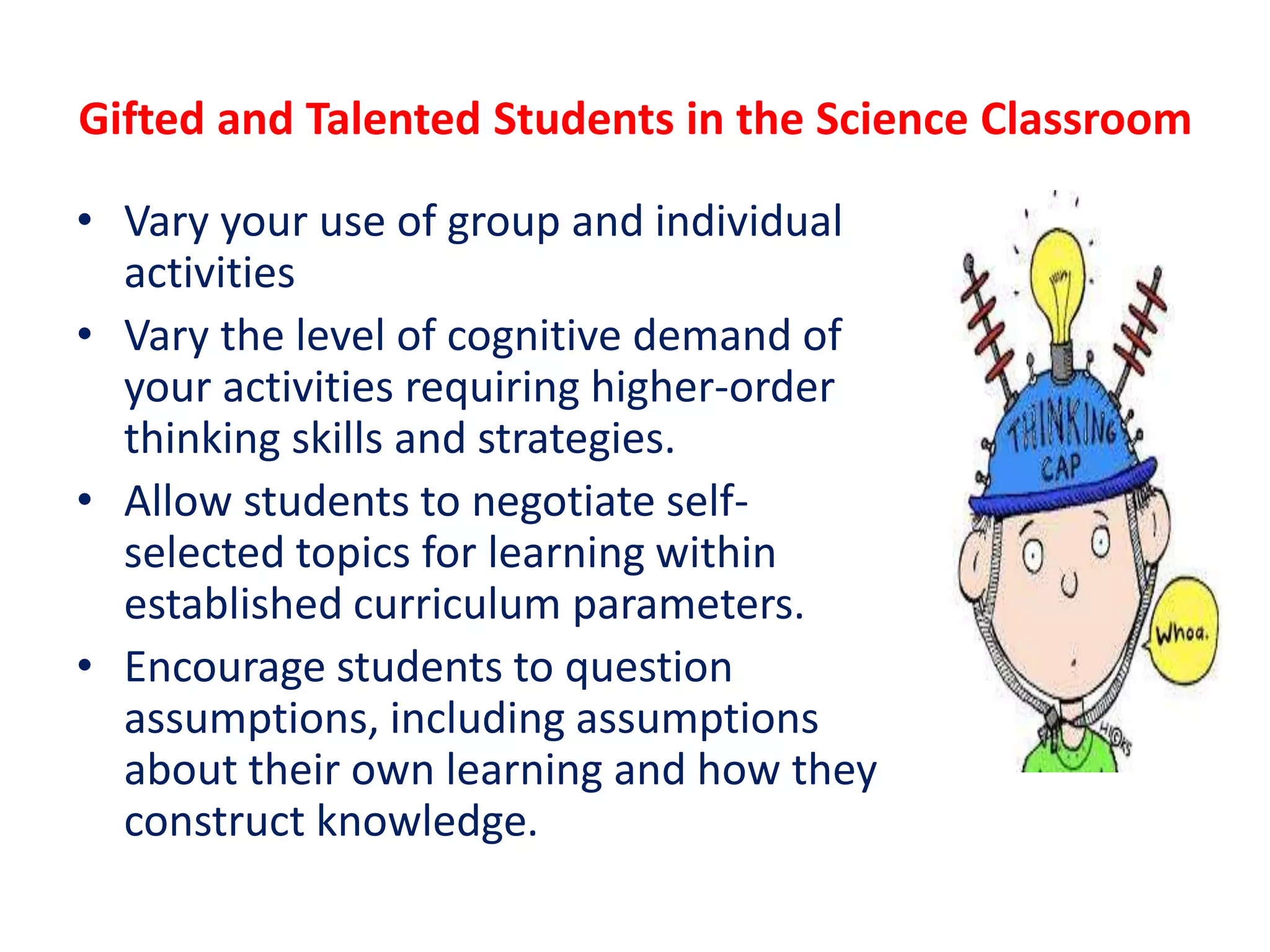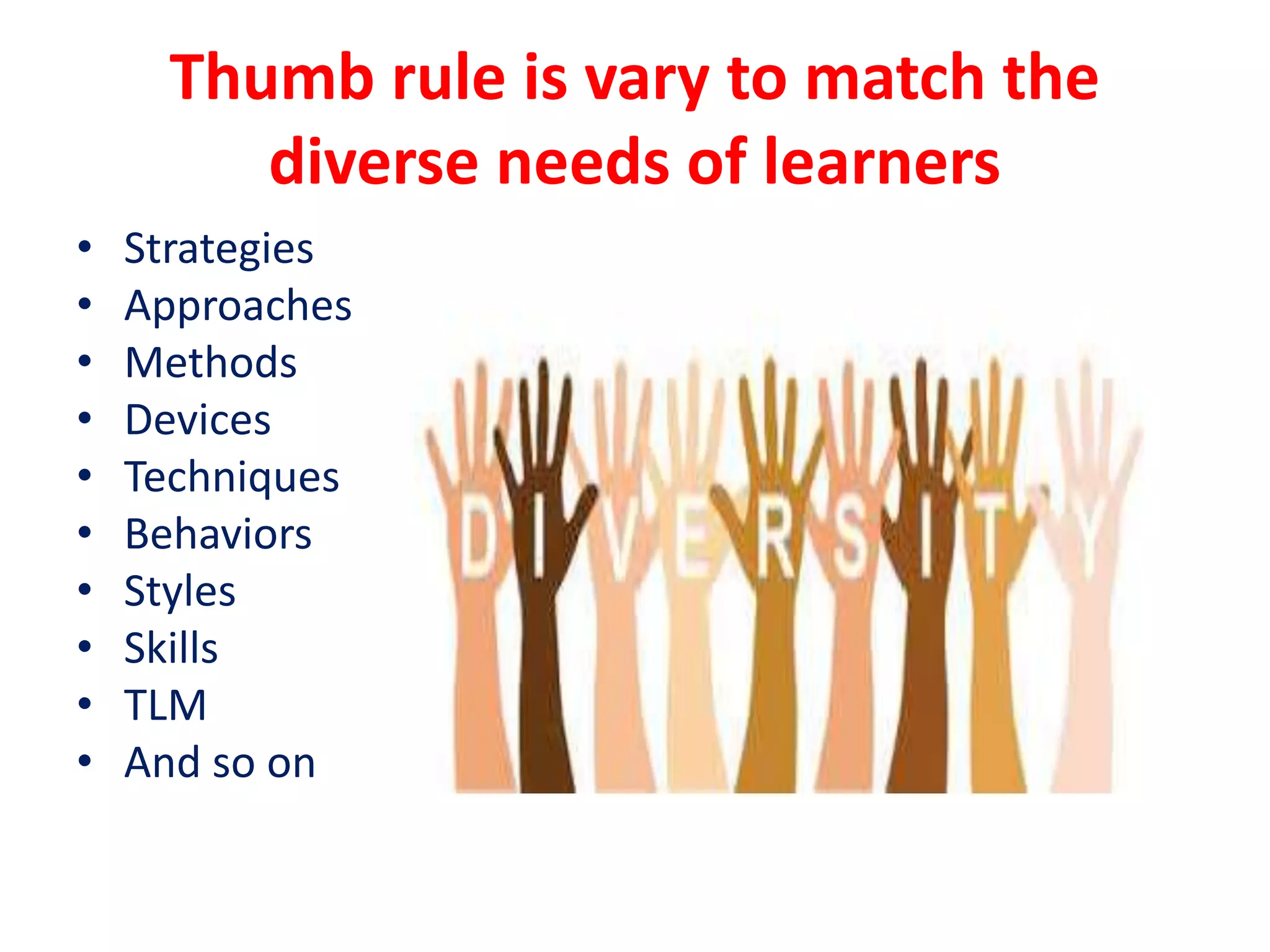This document discusses strategies for making science classrooms more inclusive of diverse learners. It describes various types of diversity among students, including differences in learning styles, abilities, cultural and socioeconomic backgrounds.
The key strategies proposed include differentiated instruction to meet varied student needs, incorporating multiple perspectives and ways of knowing, setting high expectations while providing support, and adopting a universal design framework. Specific accommodations are suggested for different disabilities. An inclusive classroom climate, accessible physical environment and delivery methods, and flexible assessment are also emphasized. The overall approach is to vary instructional techniques to accommodate all learners.







